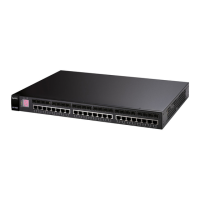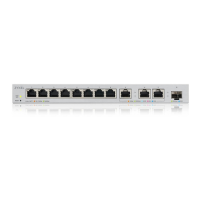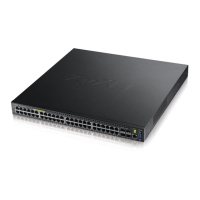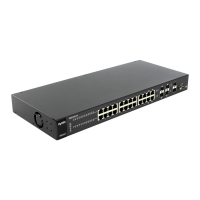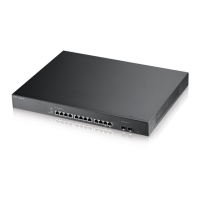Chapter 50 OSPF
XGS4600 Series User’s Guide
468
In the IPv4 OSPF Configuration screen, click Virtual-Link to display the screen as shown next.
Figure 370 IP Application > OSPF > IPv6 OSPF > Configuration > Virtual-Link
The following table describes the related labels in this screen.
Table 219 IP Application > OSPF > IPv6 OSPF > Configuration > Virtual-Link
LABEL DESCRIPTION
Area ID Select the area ID (in an IP address format with dotted decimal notation) of an area to
associate the interface to that area.
Peer Router ID Enter the ID of a peer border router.
Retransmit
Interval
Specify how long (in seconds) the Switch should wait for an acknowledgment packet from the
interface's neighbor device before retransmitting link-state advertisements (LSAs) on the
interface. The valid range for retransmitting is between 1 and 65535. The default value is 5
seconds.
Transmit Delay Set the estimated time (in seconds) that is required to transmit a link-state update packet on
the interface. The valid range for transmitting delay is between 1 and 65535. The default value
is 1 second.
Hello Interval Specify how often (in seconds) the Switch sends hello packets on the interface to check if the
interface's neighbor devices still exist. The valid range for hello interval is between 1 and 65535.
The default value is 10 seconds.
Dead Interval Specify how long (in seconds) the Switch should wait for a hello packet from the interface's
neighbor device before declaring that the neighbor device is not available. The valid range for
dead interval is between 1 and 65535. The default value is 40 seconds.
Add Click Add to save your changes to the Switch’s run-time memory. The Switch loses these
changes if it is turned off or loses power, so use the Save link on the top navigation panel to
save your changes to the non-volatile memory when you are done configuring.
Cancel Click Cancel to begin configuring this screen afresh.
Clear Click Clear to set the above fields back to the factory defaults.
Index This field displays an index number of an entry.
Area ID This field displays the area ID (in an IP address format with dotted decimal notation) of an area
to associate the interface to that area.
Peer Router ID This field displays the ID (that uses the format of an IP address in dotted decimal notation) of a
peer border router.
Select an entry’s check box to select a specific entry. Otherwise, select the check box in the
table heading row to select all entries.
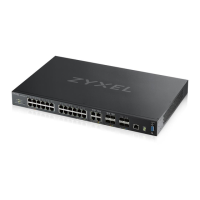
